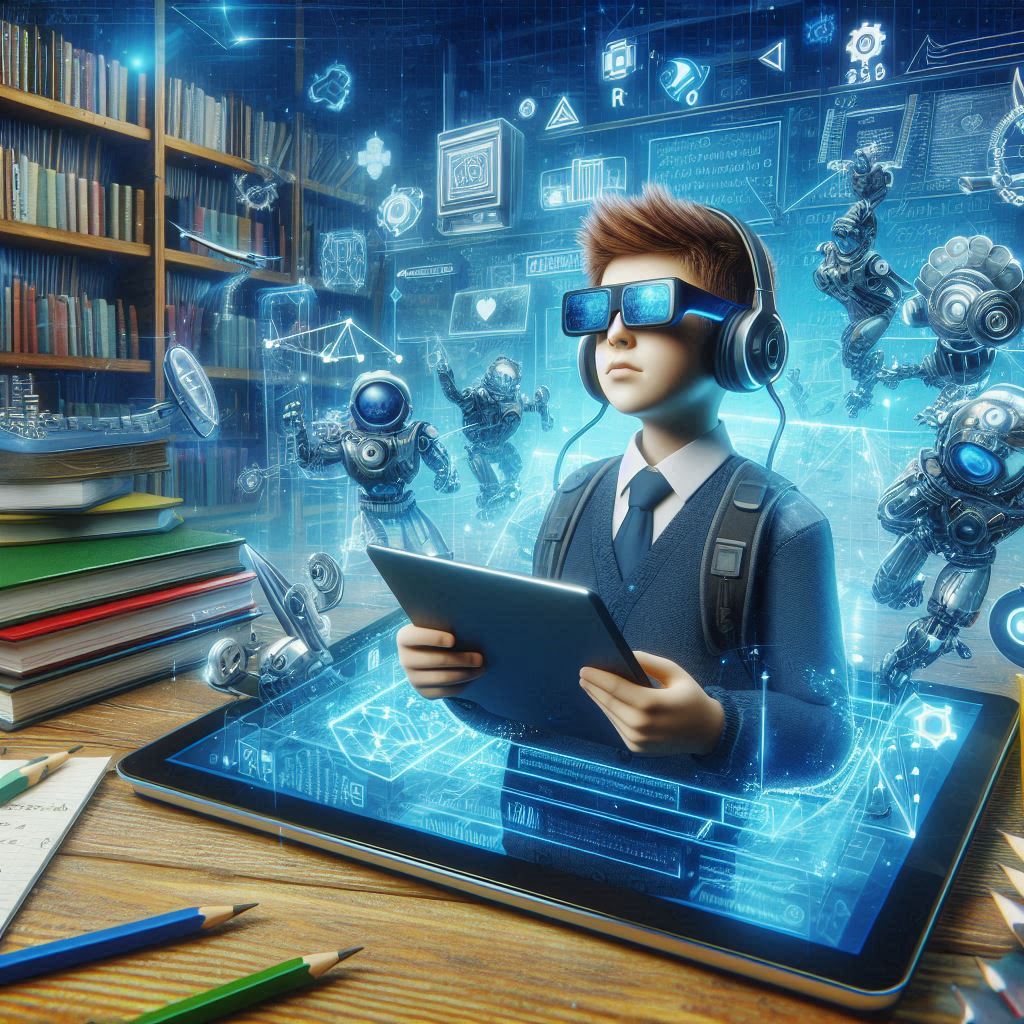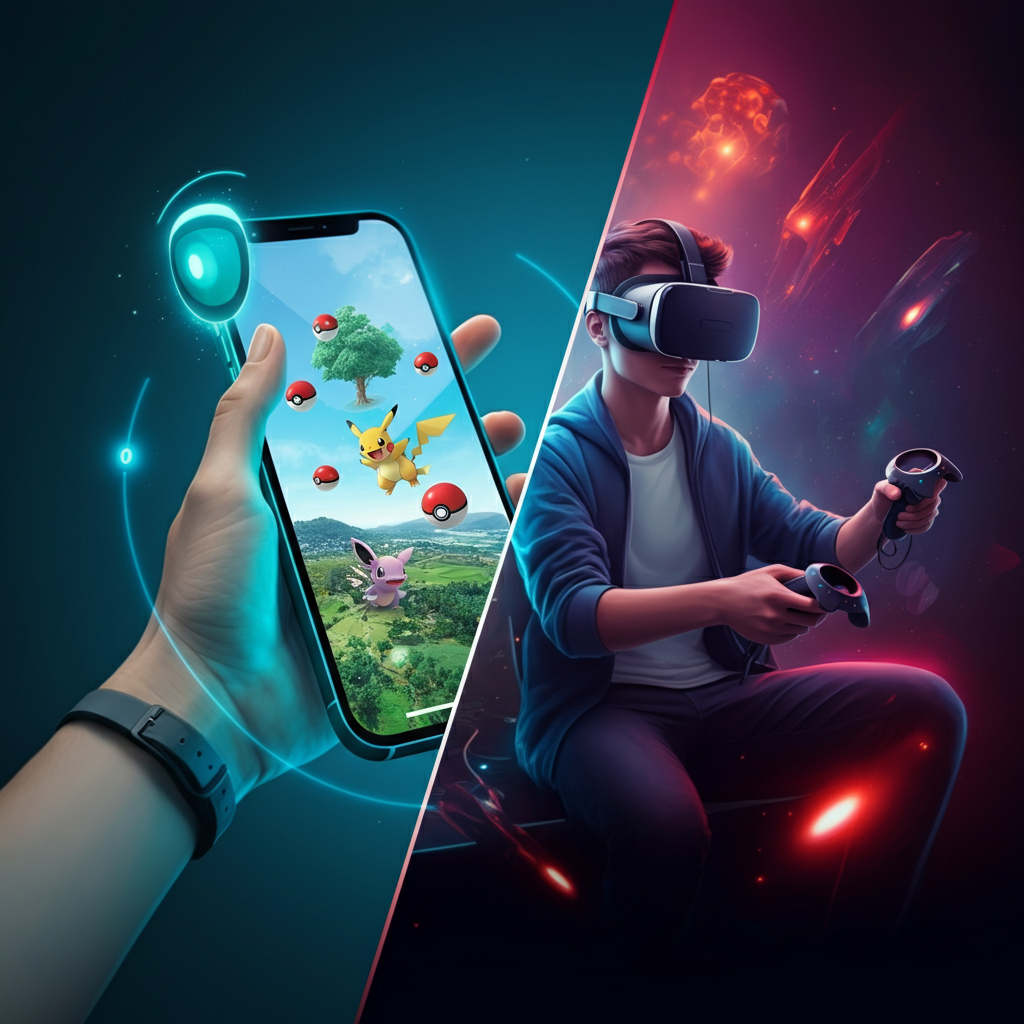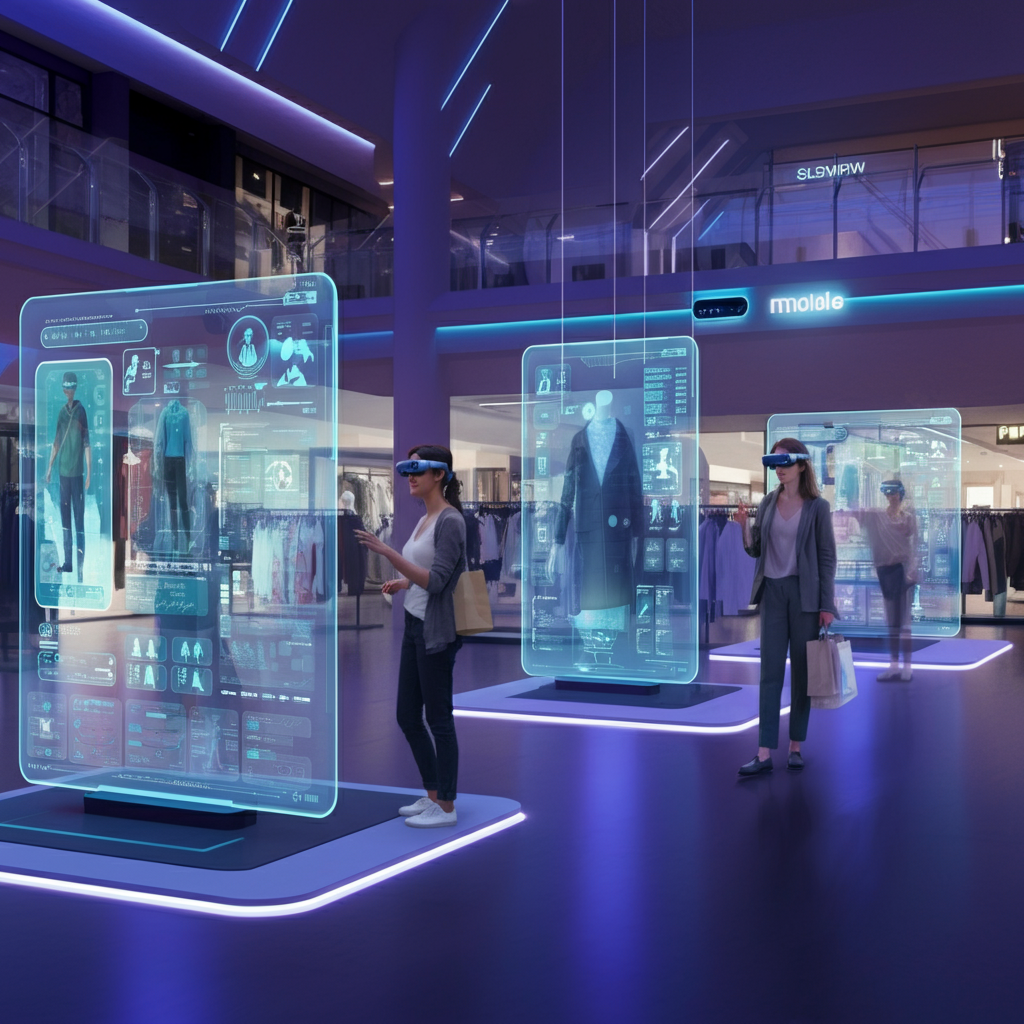Augmented Reality (AR) is no longer confined to science fiction—it’s here, transforming the way we interact with the digital and physical worlds. From gaming to healthcare, AR technology is becoming an integral part of everyday life, especially in the United States, where tech innovation leads the charge. This blog dives into AR’s evolution, its impactful applications, the challenges it faces, and its bright future.
If you’re a tech enthusiast eager to learn more about AR’s role in shaping industries across the USA, keep reading. Let’s explore what this cutting-edge technology has to offer.
What Is Augmented Reality (AR)?
Augmented Reality (AR) is a cutting-edge technology that enhances the real world by overlaying digital elements, such as images, sounds, and interactive features, onto the physical environment. Unlike Virtual Reality (VR), which creates a fully immersive digital experience, AR enhances what you see and interact with in real life using devices like smartphones, tablets, or AR glasses.
Applications of AR are vast, spanning industries such as gaming, retail, healthcare, and education. From trying on virtual clothing to receiving real-time instructions during surgery, AR is transforming how we experience and interact with the world around us.
Key Features of AR Technology
AR overlays digital content—images, sounds, or interactive features—onto a user’s real-world environment using devices like smartphones, AR glasses, or headsets. Unlike virtual reality (VR), which immerses users in a completely digital realm, AR enhances physical spaces with a blend of real and virtual elements. Key features include:
- Real-Time Interaction: AR operates seamlessly with the natural environment.
- 3D Content Blending: Enhanced visuals that occupy real-world spaces.
- Device Compatibility: From smartphones to specialized AR glasses.
Difference Between AR and Virtual Reality (VR)
Augmented Reality (AR) and Virtual Reality (VR) are both immersive technologies, but they offer fundamentally different experiences. AR enhances the real world by overlaying digital elements, such as graphics, sounds, or text, onto the physical environment, allowing users to interact with both simultaneously. Think of apps like Pokémon GO, where virtual creatures appear in real-world settings.
On the other hand, VR creates a completely virtual environment that replaces the real world. Using headsets like the Oculus Quest, users are fully immersed in a digital space, whether it’s exploring a new planet or simulating a factory floor. While AR integrates with reality, VR isolates users in a wholly constructed virtual experience, making each technology suited to different use cases.
A Brief History of Augmented Reality
The concept of AR started taking shape in the 1960s with Ivan Sutherland’s Sword of Damocles, an early head-mounted display. Over the following decades, researchers explored military applications, such as immersive training and simulations.
The last two decades have brought AR into the mainstream. With the advent of smartphones, AR leaped forward, offering accessibility like never before. AR-powered games like Pokémon GO and Snapchat filters introduced millions to its capabilities, while advancements in wearable tech have made AR more versatile than ever.
Applications of AR Across Industries in the USA
AR in Retail and E-Commerce
Augmented reality (AR) is transforming the retail and e-commerce landscape by bridging the gap between physical and digital shopping experiences. With AR, customers can virtually try on clothes, accessories, or makeup, and even preview how furniture fits into their spaces—all from the comfort of their homes. For retailers, this innovative technology not only enhances customer engagement but also reduces return rates by giving consumers more confidence in their purchases.
By bringing products to life, AR delivers a personalized and immersive shopping experience that meets the evolving expectations of tech-savvy shoppers. From driving sales to building stronger brand connections, augmented reality is proving to be a game-changer for retailers worldwide.
Enhancing Customer Experience
AR is revolutionizing retail by bridging the gap between online and in-store shopping. Retailers use AR for gamified shopping experiences, providing immersive storytelling to keep customers engaged.
Apps like Sephora Virtual Artist and IKEA Place allow customers to try on makeup or visualize furniture in their homes before buying. These tools reduce uncertainty and increase customer satisfaction.
AR in Education

Augmented Reality (AR) is revolutionizing education by making learning more interactive and immersive. With AR, students can explore complex concepts in engaging, three-dimensional environments that go beyond the limits of traditional textbooks. For example, they can examine the intricate structure of a human cell or take a virtual walk through historical landmarks, all from their classroom.
This technology not only enhances understanding but also keeps students motivated and curious. By bridging the gap between theory and real-world application, AR has the potential to transform education and equip learners with the skills they need for the future.
Interactive Learning Tools
AR apps such as HP Reveal make learning more engaging by turning textbooks into interactive experiences.
AR in Classroom Settings
Teachers integrate AR-enabled devices to create immersive explorations of history, science, and geography, fostering a more interactive classroom environment.
Healthcare Innovations with AR
Augmented Reality (AR) is transforming the healthcare industry by providing innovative solutions for both patients and medical professionals. From training surgeons with hyper-realistic simulations to guiding complex procedures in real-time, AR is enhancing precision and improving outcomes. Patients are also benefiting through applications like AR-powered therapy tools, which make rehabilitation more interactive and engaging.
By overlaying critical information onto physical environments, AR is supporting faster diagnoses and providing clearer communication between doctors and patients. This technology has the potential to redefine traditional practices, making healthcare more efficient, accessible, and personalized.
Surgical Simulations and Training
AR empowers medical professionals with intricate 3D anatomy models and real-time surgical guidance, reducing errors.
Patient Treatment and Therapy
AR-based rehabilitation exercises improve patient outcomes, especially for neurological and motor function recovery.
AR in Gaming and Entertainment

Augmented Reality (AR) is transforming the gaming and entertainment industries by creating immersive, interactive experiences that seamlessly blend the digital and physical worlds. AR allows players to transcend traditional screens, integrating virtual elements directly into their real-world environment. Popular games like Pokémon GO have demonstrated the power of AR to captivate audiences, encouraging exploration and social interaction while providing a unique gaming experience.
Beyond gaming, AR is also being used in entertainment to enhance live events, with features like interactive stage performances and real-time visual augmentations for audiences. By combining cutting-edge technology with creativity, AR is revolutionizing how we play, watch, and engage with entertainment.
Immersive Gaming Experiences
Gaming giants like Niantic have set the stage with AR-powered mobile games, blending reality with fantasy.
AR in Live Events and Theme Parks
AR enhances concerts, theme park rides, and live sports, offering unforgettable experiences that blend digital magic with real-world environments.
AR in Real Estate and Architecture
Augmented Reality (AR) is revolutionizing the real estate and architecture industries by providing immersive, interactive experiences for both professionals and clients. With AR technology, potential buyers can visualize properties in 3D before they are built, walking through virtual rooms and exploring layouts as if they were physically present.
Architects are leveraging AR to present design concepts more effectively, overlaying virtual structures onto real-world environments to showcase how a project will integrate with its surroundings. This innovative approach not only streamlines decision-making but also enhances collaboration between stakeholders, bridging the gap between imagination and reality in unprecedented ways.
Visualizing Property Layouts
Virtual tours powered by AR help buyers envision what a property looks like, boosting confidence in decision-making.
Streamlining Architectural Design
AR streamlines architectural workflows by offering 3D overlays of building designs, saving time and costs.
Technological Advancements in AR in the USA
Augmented Reality (AR) technology has made remarkable strides in the USA, finding applications across various industries and transforming how people interact with digital content. From gaming and entertainment to healthcare and retail, AR is pushing the boundaries of what was once thought possible. Advances in hardware, such as lightweight AR glasses and more powerful processing units, have made the technology more accessible and immersive.
Additionally, American tech companies are harnessing AI to enhance AR experiences, enabling real-time object recognition and contextual overlays. These innovations are not only elevating user experiences but also driving economic growth as businesses leverage AR to improve training, marketing, and operational efficiency. With continued investment and research, AR is poised to become an integral part of everyday life.
Leading AR Platforms and Devices
AR Glasses and Wearables
Brands like Magic Leap and Microsoft’s HoloLens are leading the charge with AR glasses that merge technology and style.
Smartphone AR Applications
Apps like Google Lens and Apple’s ARKit are empowering users with AR experiences directly through their smartphones, making AR accessible to nearly everyone.
Role of Artificial Intelligence in AR
Artificial Intelligence (AI) plays a crucial role in enhancing Augmented Reality (AR) experiences, making them more interactive, personalized, and intuitive. Through AI’s ability to process and analyze vast amounts of data, AR applications can adapt dynamically to user preferences and environments. For instance, AI-powered AR can recognize objects and surroundings in real time, enabling features like virtual try-ons in retail or accurate overlays in navigation.
Additionally, AI-driven machine learning algorithms improve the precision of AR by predicting user behaviour and continuously refining the experience. Together, AI and AR are transforming industries, from gaming and healthcare to education and retail, unlocking new possibilities for innovation and engagement.
Enhancing Real-Time Interaction
Machine learning improves AR’s ability to recognize objects, thus enhancing its integration with the physical world.
AI-Driven Content Generation
AI boosts AR’s ability to generate and adapt content, making experiences more personalized and engaging.
Challenges in Implementing AR in the USA
Implementing augmented reality (AR) technology in the USA comes with its fair share of challenges. One significant hurdle is the high cost of development and deployment, as AR solutions often require specialized hardware, software, and a skilled workforce. Additionally, ensuring widespread adoption is difficult due to the lack of public awareness and understanding of AR’s potential benefits. Technical limitations, such as the need for seamless integration with existing systems and infrastructure, further complicate implementation.
Privacy concerns also loom large, with users and organizations wary of how data is collected and used by AR platforms. Finally, the regulatory environment is still evolving, creating uncertainty for businesses looking to invest in this transformative technology. Addressing these challenges will be pivotal in realizing AR’s full potential in reshaping industries and experiences across the USA.
Technical and Developmental Hurdles
Developing AR demands significant expertise and cutting-edge hardware, making scaling a challenge for many companies.
Privacy and Security Concerns
AR often collects location and personal data, raising concerns about misuse or breaches.
High Costs of AR Technology
Innovative AR solutions require a massive financial investment, often making them inaccessible for smaller businesses.
The Future of AR in the USA
Augmented Reality (AR) is set to revolutionize industries across the United States, blending the physical and digital worlds in ways that were once the stuff of science fiction. From enhancing retail experiences with virtual try-ons to transforming education with immersive learning environments, AR is proving to be an indispensable tool for innovation. Businesses are leveraging AR to boost customer engagement, streamline workflows, and even conduct remote training sessions, while healthcare professionals are using it for advanced surgeries and patient care.
With continuous advancements in AR technologies and increasing adoption across sectors, the USA is poised to lead the global AR market. As AR devices become more affordable and accessible, the line between reality and augmented reality will blur further, redefining how Americans work, shop, and play.
Growth Projections for AR Market
The AR market in the USA is expected to grow exponentially, reaching new industries and demographics as technology becomes cheaper and more accessible.
Potential Breakthroughs in AR Technology
Advancements in 5G, AI, and wearable tech are setting the stage for AR to become even more interactive, immersive, and indispensable.
Shaping Tomorrow’s Reality
Augmented Reality continues to redefine how industries operate and how consumers interact with the digital world. From retail to healthcare, education to gaming, AR is emerging as an essential tool for innovation in the USA. Its challenges are significant, but the potential rewards are even greater.
Are you ready to stay ahead of the curve and explore more about AR? Stay tuned for the latest updates, or share your thoughts in the comments below!
Conclusion
Augmented Reality (AR) is no longer confined to sci-fi fantasies or niche tech circles—it is reshaping the way we engage with the world around us. From revolutionizing education to enhancing shopping, healthcare, and entertainment, AR offers practical and transformative applications in everyday life. Its ability to merge the digital with the physical opens endless possibilities for innovation, efficiency, and engagement.
Whether you’re a business owner looking to improve customer experiences or simply curious about the technology, AR is undeniably shaping the future. The question is no longer if AR will make an impact, but how you’ll choose to leverage its power in your own life.





